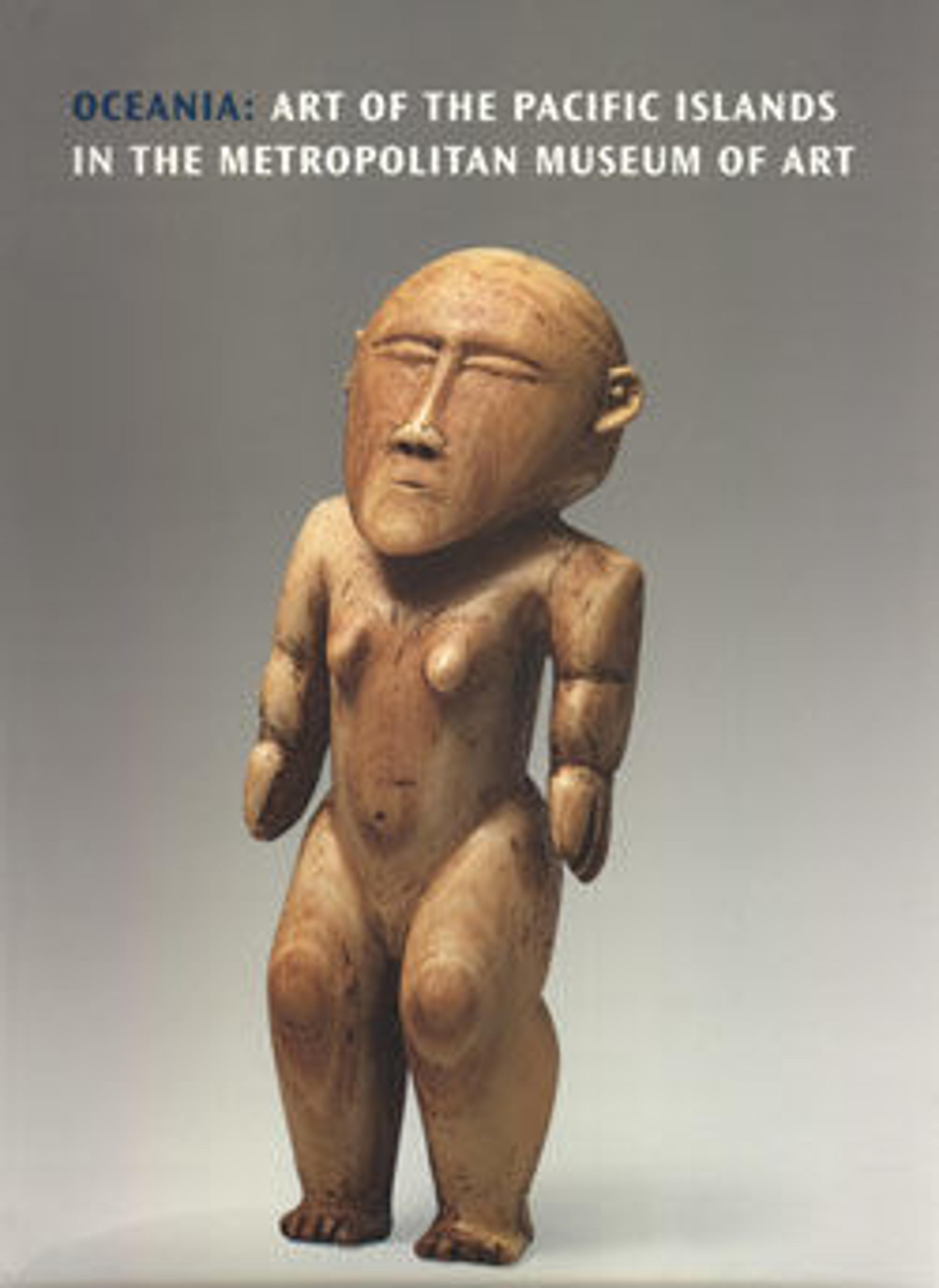Head for Yam ceremony (Yena)
The Kwoma, Nukuma, and Yessan-Mayo are closely related peoples living in the hills north of the middle Sepik River in northern New Guinea. These groups share a unique art tradition associated with a religious cult centered on the cultivation of yams. A sequence of three rituals, called "yena," "minja," and "nokwi," each involving a different type of figure, is performed in honor of the yam harvest.
Carved wooden heads such as this one are created for yena, the first of these harvest rituals. With bulging eyes and pendulous noses, yena heads represent ancient and powerful spirits. During the ritual, village men assemble a pile of yams within the ceremonial house. The sticklike bases of the yena are inserted into the yam pile and the heads are decorated with brightly colored leaves, feathers, and other ornaments. The men then dance and sing to honor the yena spirits. At the conclusion of the ritual, the display is dismantled, the heads stored away, and preparations for the next ritual begun.
Carved wooden heads such as this one are created for yena, the first of these harvest rituals. With bulging eyes and pendulous noses, yena heads represent ancient and powerful spirits. During the ritual, village men assemble a pile of yams within the ceremonial house. The sticklike bases of the yena are inserted into the yam pile and the heads are decorated with brightly colored leaves, feathers, and other ornaments. The men then dance and sing to honor the yena spirits. At the conclusion of the ritual, the display is dismantled, the heads stored away, and preparations for the next ritual begun.
Artwork Details
- Title:Head for Yam ceremony (Yena)
- Date:19th–early 20th century
- Geography:Papua New Guinea, Yau village, Upper Sepik River region
- Culture:Yessan-Mayo people
- Medium:Wood, paint
- Dimensions:H. 42 x W. 9 x D. 7 in. (106.7 x 22.9 x 17.8 cm)
- Classification:Wood-Sculpture
- Credit Line:The Michael C. Rockefeller Memorial Collection, Purchase, Mr. and Mrs. Wallace K. Harrison Gift, 1974
- Object Number:1978.412.1699
- Curatorial Department: The Michael C. Rockefeller Wing
More Artwork
Research Resources
The Met provides unparalleled resources for research and welcomes an international community of students and scholars. The Met's Open Access API is where creators and researchers can connect to the The Met collection. Open Access data and public domain images are available for unrestricted commercial and noncommercial use without permission or fee.
To request images under copyright and other restrictions, please use this Image Request form.
Feedback
We continue to research and examine historical and cultural context for objects in The Met collection. If you have comments or questions about this object record, please contact us using the form below. The Museum looks forward to receiving your comments.
